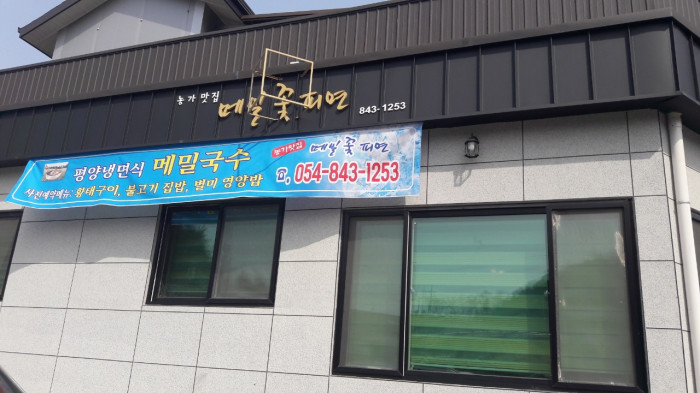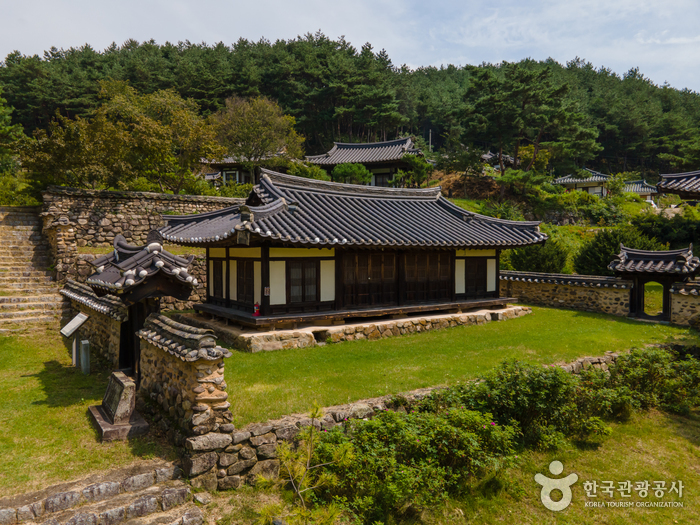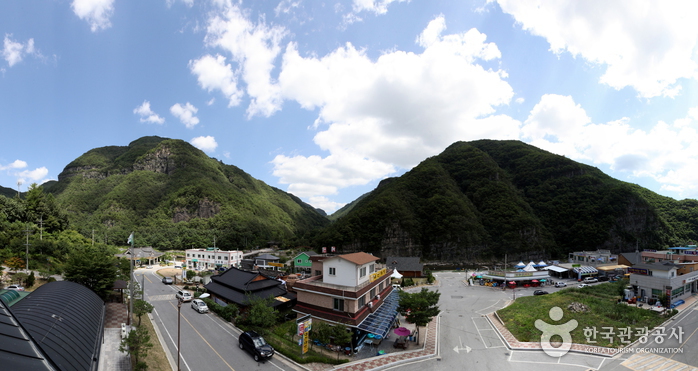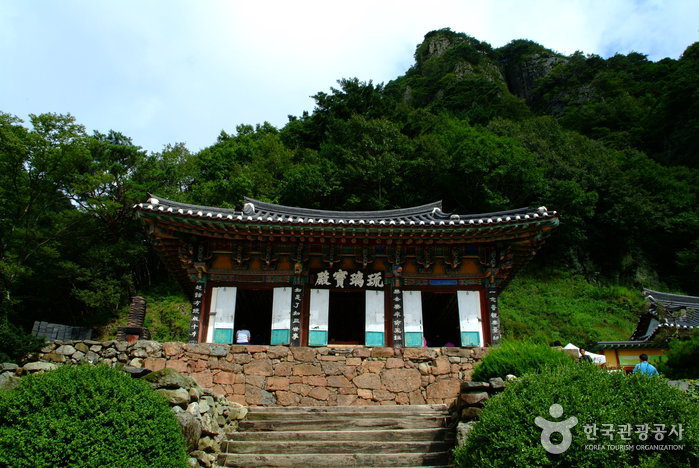Dosanseowon Confucian Academy [UNESCO World Heritage] (도산서원 [유네스코 세계문화유산])
0m 43897 2023-05-18
154, Dosanseowon-gil, Andong-si, Gyeongsangbuk-do
+82-54-8561073
In terms of architecture, Dosanseowon Confucian Academy complex can largely be divided into Dosanseodang compound and Dosanseowon compound. Dosanseodang area consists of living quarters and lecture halls where Toegye Yi Hwang, an eminent Confucian scholar, lived and taught his students. Dosanseowon was built after Toegye Yi Hwang passed away by his followers' legacy of his teachings as well as to pay respects to the deceased.
Built in 1561, Dosanseodang lecture hall is the oldest building in the whole complex. It was personally designed by Yi Hwang, penname Toegye, to further his studies while educating future scholars after moving to the countryside. Living quarters used as a student dormitory were also built along with the lecture hall.
Dosanseowon compound was completed in 1576, six years after Yi Hwang's death. Yi Hwang's ancestral tablet was enshrined inside Sangdeoksa Shrine (Treasure No. 211) in 1572. Two years later, Jeongyodang Lecture Hall (Treasure No. 210) was built to relocate the tablet and with the addition of buildings to the hall's east and west, the area became a seowon. In 1575, the establishment was bestowed a royal charter and a plaque with the name Dosanseowon written by Han Seok-bong, and became the Confucian academy headquarters in the Yeongnam region.
On-gye Jongtaeg (Sambaegdang) [Korea Quality] / 온계종택 삼백당 [한국관광 품질인증]
2.7 Km 155 2023-10-30
20 , Onhyejungma-gil, Andong-si, Gyeongsangbuk-do
+82-10-8704-3434, +82-10-2988-3435
Ongye Jongtaek Sambaekdang in Andong, Gyeongsangbuk-do, is a restored hanok and original home of Ongye Lee Hae, the older brother of the famous Toegye Lee Hwang. Right outside the hanok stands a 500-year-old chestnut tree, symbolic guardian of the village. Some guestrooms have bathrooms with toilet, while some have AC. The shower room, laundry room, kitchen, storage room, and wood-floor sitting room are shared. For groups of 10 or more, an outdoor barbecue can be arranged - but inquire ahead. Visitors who book in advance can take part in handicraft programs such as tea-bag making.
Nosongjeong Head House[Korea Quality] / 노송정종택(퇴계생가)[한국관광 품질인증]
2.8 Km 17499 2023-10-30
46-5 , Onhyejungma-gil, Andong-si, Gyeongsangbuk-do
+82-54-856-1052
Nosongjeong Head House is located in Dosan-myeon, Andong, Gyeongsangbuk-do and is the birthplace of Toegye Yi Hwang. The room in which Toegye Yi Hwang was born is known as Toegye Taesil, and it is uniquely designed in the shape of a castle with banisters covering three sides of the center. There are seven guest rooms, including keun sarangchae (large detached building) and chaekbang (study), and a bathroom in anbang (main room). Nosongjeong Pavilion consists of two large rooms with a maru equivalent of a wide wooden-floored area, and the bathroom and shower are outside. Guests staying in the upper room, lower room, large room, and small room also have to use the outdoor bathroom. Nearby are historic sites such as the Dosanseowon Confucian Academy, Cheongnyangsa Temple, and Gukmangbong Peak.
Memilkkot Pimyeon (메밀꽃피면)
4.3 Km 77 2021-03-26
22, Seonseong 4-gil, Andong-si, Gyeongsangbuk-do
+82-54-843-1253
It is a place where the directly made soba noodles and thick broth are excellent. The best menu at this restaurant is buckwheat noodles. This Korean dishes restaurant is located in Andong-si, Gyeongsangbuk-do.
Nongam Head House (농암종택)
5.6 Km 51330 2023-05-18
162-133 , Gasong-gil, Andong-si, Gyeongsangbuk-do
+82-54-843-1202
This is the head house of Nongam I Hyeon-bo, located in Gasong-gil, Dosan-myeon, Andong-si. I Hyeon-bo served as Saganwonjeongeon in 1504 (the 10th year of Yeonsangun) and was exiled to Andong due to the king's anger. The place where Nongam Head House was located was Buncheon Village, but Buncheon Village was submerged due to the construction of Andong Dam in 1976. Since then, the head house, shrine, and Geunggudang, which had all been relocated to various places in Andong, were moved to one place by I Seong-won, a descendant of the Yeongcheon I family. In 2007, Bungang Confucian Academy was rebuilt and is now called Bungang Village and open to the public.
Andong Gunja Village (안동 군자마을)
6.9 Km 2 2024-02-23
29 Gunjari-gil, Waryong-myeon, Andong-si, Gyeongsangbuk-do
Andong Gunja Village, established 600 years ago, was relocated 2 kilometers from its original site due to submergence during the construction of Andong Dam. The village's tradtional houses and pavilions were meticulously moved to preserve their historic value. Known as Gunja Village, it derives its name from a remark by the Joseon-era civil servant Jeong Gu, who noted, "There is no one in the village who is not a Gunja (gentleman)". The village is home to over 20 ancient houses, including the Hujodang Head House and Takcheongjeong Pavilion, maintained in their original state. Moreover, the village archives over 1,000 documents detailing adoption, property ownership, and labor distribution.
Andong Gunja Village (Ocheon Historic Site) (안동 군자마을(오천유적지))
6.9 Km 18245 2024-03-06
29 Gunjari-gil, Waryong-myeon, Andong-si, Gyeongsangbuk-do
+82-54-852-6800
Andong Gunja Village is a cluster of around twenty hanok. During the Joseon dynasty, this area produced many scholars, hence earning the name Gunja Village, meaning a village where many learned scholars reside. Designated cultural heritage sites include Tagjeongcheong Historic House, Shrine of the Gwangsan Kim clan, and Chimlyakjeong Pavilion. Visitors can experience hanokstay, immersing themselves in the ambiance of historic houses and traditional customs.
Cheongnyangsan Provincial Park (청량산도립공원)
8.3 Km 11209 2022-07-26
39, Gwangseok-gil, Bonghwa-gun, Gyeongsangbuk-do
+82-54-679-6651
Cheongnyangsan Mountain, with an altitude of 870 meters, is hidden away from civilization. Attractions in the mountain are 12 peaks including Geumtapbong Peak, eight caves, Gwangchangpokpo Falls, and Cheongnyangsa Temple, built by Buddhist monk Wonhyo during King Munmu’s third year of reign during the Silla Period (57 BC - AD 935).
Behind the Cheongnyangsan Provincial Park’s entrance boulder is a monument with a poem inscribed on it by the famous scholar Toegye Yi Hwang of the Joseon period called Cheongnyangsanga. Aside from Toegye Yi Hwang, Wonhyo and Uisang, caligraphy master Gimsaeng, scholar Choi Chi-won, and many others came to this mountain to cultivate their arts. Their presence still lingers in legends, being retold to this day.
Bonghwa Cheongnyangsa Temple (청량사(봉화))
9.7 Km 15675 2022-12-27
199-152, Cheongnyangsan-gil, Bonghwa-gun, Gyeongsangbuk-do
+82-54-672-1446
Located in Cheongnyangsan Mountain Provincial Park, Cheongnyangsa Temple was built by the great monk Wonhyo in 663, the 3rd year of King Munmu of the Silla Kingdom. According to the principles of feng shui, the area is an ideal place for a temple – with the 12 mountain peaks surrounding the temple like the petals of a lotus flower.
The temple is home to two precious historical remains; one is the board of Yuribojeon that King Gongmin of Goryeo wrote upon and the other is Jibul. Yuribojeon is the building where Yaksa-yorae-bul (the Medicine Buddha Statute) is housed and Jibul is a Buddha statute made of paper that was painted with gold.
At the back of the temple is Bosalbong Peak looking out towards Cheongnyangsan Mountain. A 30-minute walk along the hiking trail will lead the hikers to Eungjinjeon, a hermitage with a beautiful view where the great monk Wonhyo once stayed. Behind Eungjinjeon stands Geumtapbong Peak and the sheer cliffs below. The peak was named Geumtapbong (meaning ‘golden pagoda’ in Korean) since it looks like a nine-story pagoda with pine trees growing around the base. In the autumn, the beautiful red, gold and orange hues of the maple trees are a true sight to behold.
Andong School of Korean Etiquette (안동예절학교)
10.0 Km 13391 2023-04-07
1333-5, Toegye-ro, Andong-si, Gyeongsangbuk-do
+82-54-841-0511
Andong School of Korean Etiquette, which is located in Andong, is a mecca of Korea's Confucian customs and provides an opportunity to experience traditional Korean etiquette.
In addition to Korean traditional etiquette, Andong School of Korean Etiquette also teaches tea etiquette and traditional Korean music using instruments such as janggu and gayageum. Students can also experience the joy of learning how to play folk games such as yunnori and kite-flying. The school offers a wide variety of hands-on programs related to Korea's traditions and customs such as mask dance, paper craft, cooking, wedding, and eco-rafting on Nakdonggang River.
There are other popular tourist attractions nearby such as Dosanseowon Confucian Academy, Forest Science Museum and Yi Yuk-sa Literary Hall.

![On-gye Jongtaeg (Sambaegdang) [Korea Quality] / 온계종택 삼백당 [한국관광 품질인증]](http://tong.visitkorea.or.kr/cms/resource/75/3021675_image2_1.jpg)
![Nosongjeong Head House[Korea Quality] / 노송정종택(퇴계생가)[한국관광 품질인증]](http://tong.visitkorea.or.kr/cms/resource/83/3021983_image2_1.jpg)




 English
English
 한국어
한국어 日本語
日本語 中文(简体)
中文(简体) Deutsch
Deutsch Français
Français Español
Español Русский
Русский